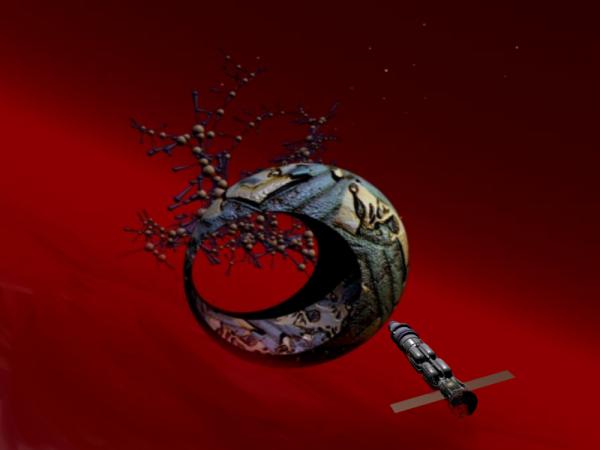BY LETTER
Microgravity Space Habitats
Technology > Application > Construction
Technology > Technology Type or Material > Drytech/Hylotech
Technology > Application > Infrastructure
Technology > Application > Megascale Engineering
Technology > Technology Type or Material > Drytech/Hylotech
Technology > Application > Infrastructure
Technology > Application > Megascale Engineering
| Emple Dokcetic microgravity habitats Image from Steve Bowers">  Image from Steve Bowers | |
| Emple Dokcetic microgravity habitats | |
Often they consist of many independent units connected together with airtight seals; these units may be of many different types and ages. Over time a cluster of microgravity habitats may grow to be very large; this can cause a problem as the cluster will self-gravitate, and may collapse or deform in undesirable ways. For this reason large microgravity clusters have a low density and may look sparse and spindly from a distance.
Microgravity sports of several different kinds, such as Zero Tag and Zeegrav-ball are often played in larger non-rotating space habitats, and microgravity fabrication technology such as vapour deposition forms the basis of much of the economy within such structures.
Related Articles
- Emple-Dokcetics, The
- Fiber Habs
- Freesphere
- Frosthive
- Gravity Balloons
- Hab / Habitat
- Microgravity - Text by M. Alan Kazlev
A state in which gravity is reduced to virtually negligible levels. For example, when an object is in free fall, it experiences microgravity. It is deleterious to baseline physiology, but space-adapted tweaks can survive a microgravity environment indefinitely. - Microgravity Art - Text by Anders Sandberg
Art that requires micro- or zero- gravity to retain its configuration. Fragile sculptures are popular, some including liquids in interesting configurations. The only problem to deal with is air drafts. - Orbital (habitat)
- Orbital (political unit) - Text by M. Alan Kazlev
Originally, a nation state or city state based on habitats in orbit around Old Earth. Over the course of the Interplanetary Age the term came to be used for any such state in Solsys. By early First Federation times the term Orbital was used more broadly for any independent or semi-independent state based on a hab in orbit around a planet. - Rotating Space Habitats
- Sailors of the Ebon Sea
- Singlehabs
- Space Adapted Human
- Starhand
- Vacuum Adapted Humans
- Zeegrav-ball
Appears in Topics
Development Notes
Text by Steve Bowers
Initially published on 22 January 2010.
Initially published on 22 January 2010.






